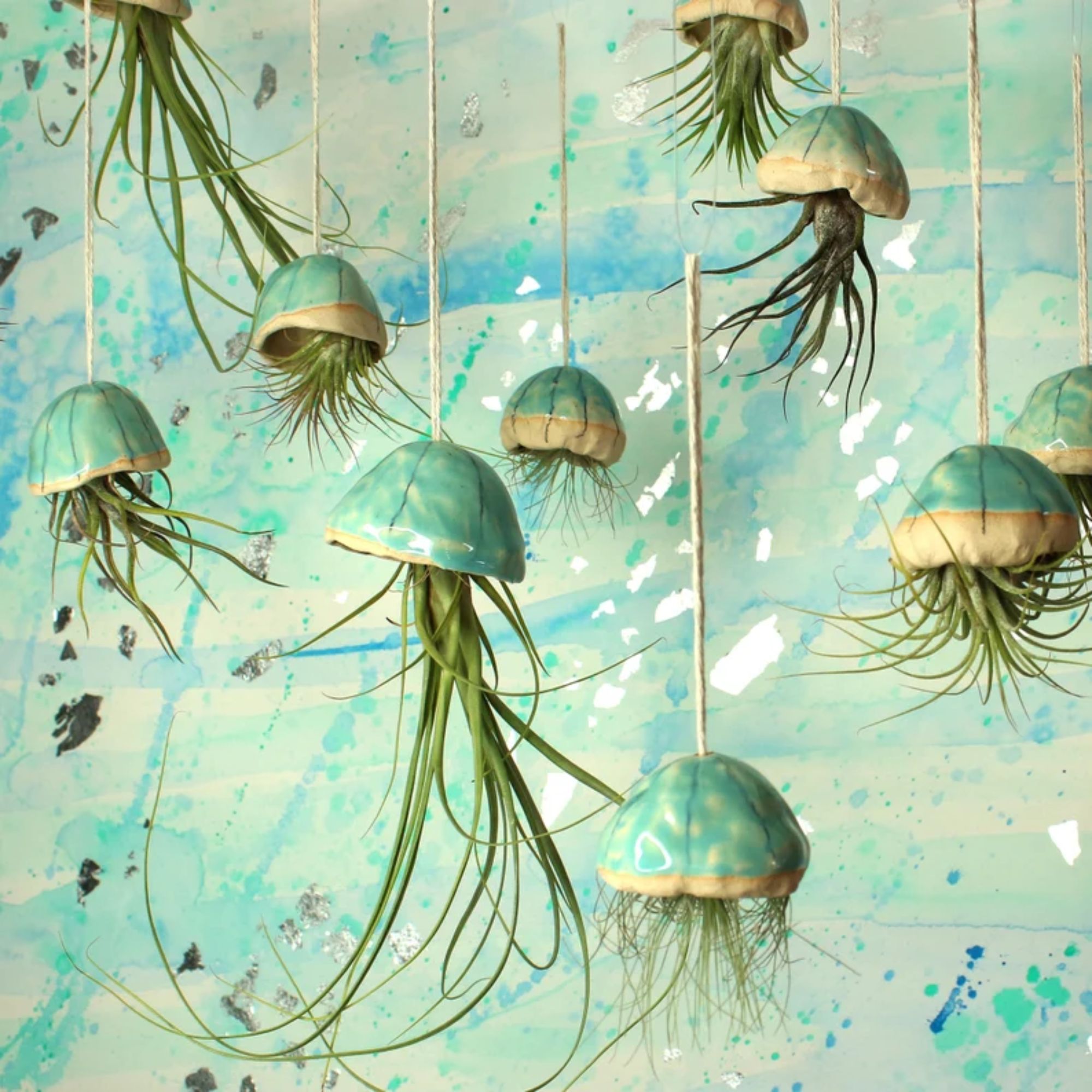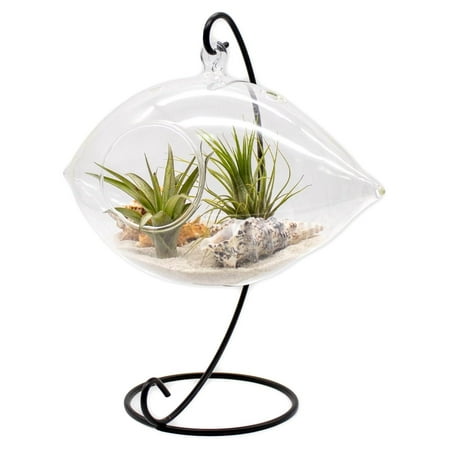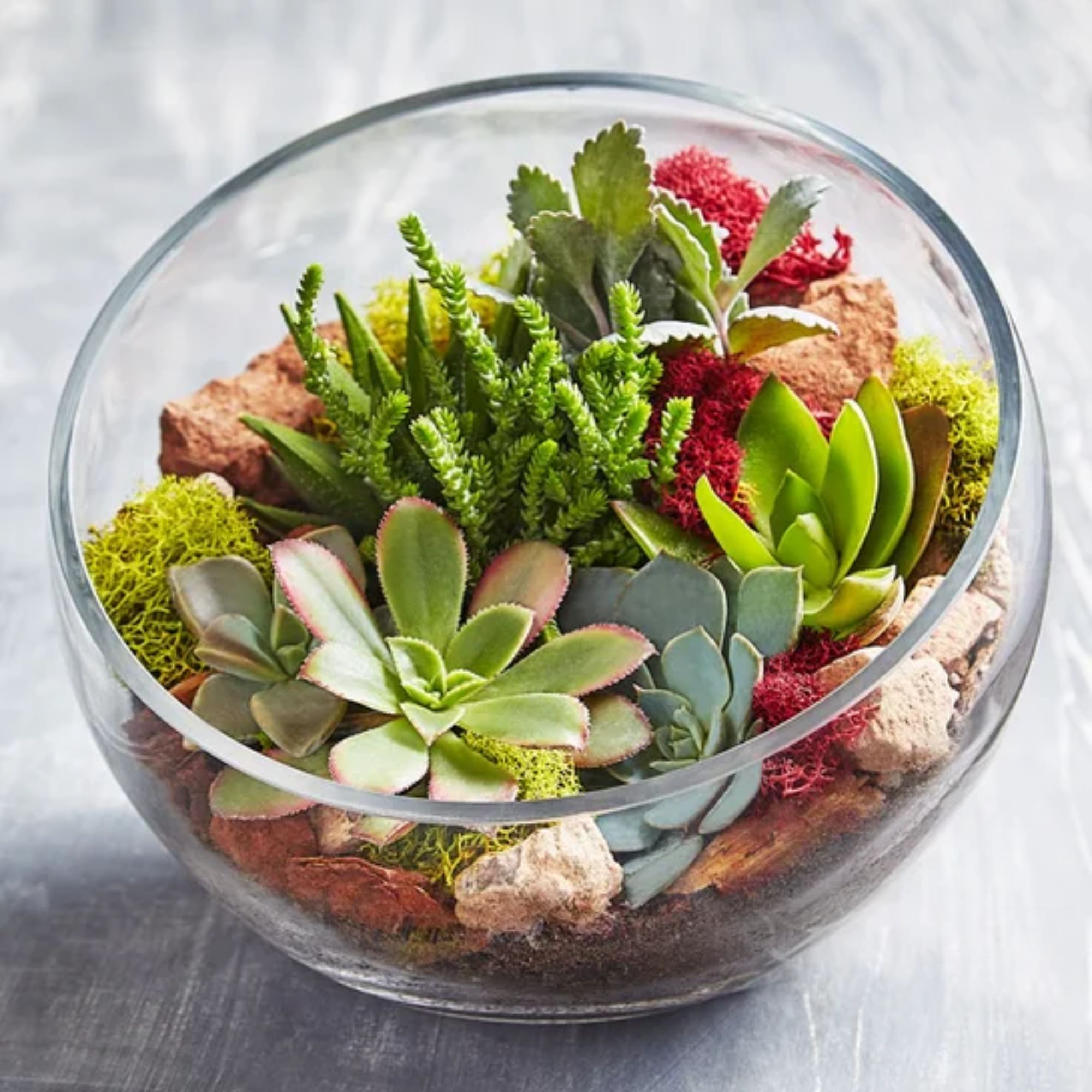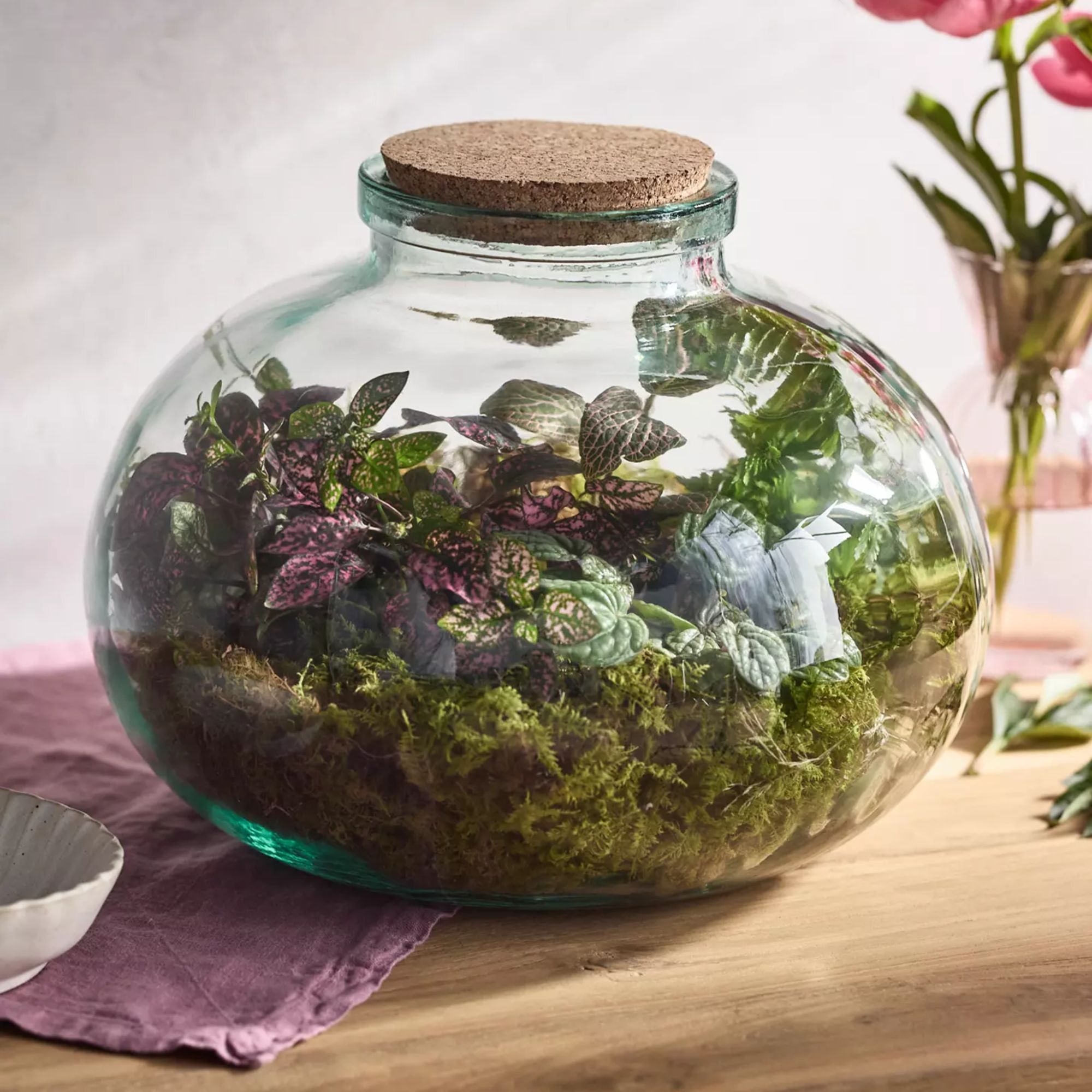Air plant terrariums vs succulent terrariums – plant experts explain the difference and reveal which is best for your home
Discover how to pick the right one for different spaces in your home
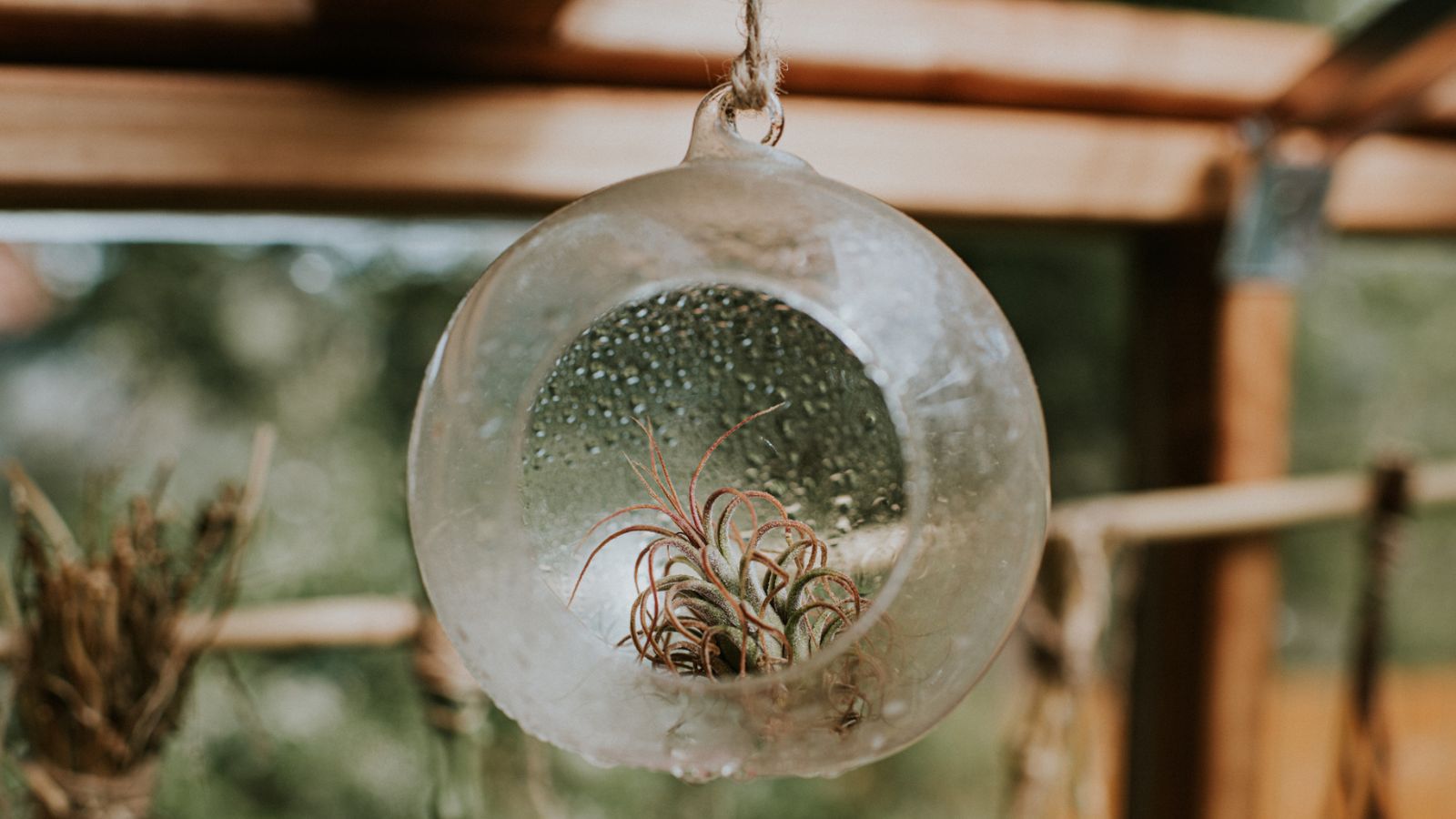

When it comes to terrariums, you have a few types of plants to consider, but two dominate the houseplant market - air plants and succulents.
However, if you aren't a plant nerd, it isn't obvious why you'd pick one over the other. To the untrained eye, they both look very similar.
I spoke to a plant nursery expert about these two common types of terrarium plants, and which is best for your home.
What is an air plant?
An air plant is any plant of the genus Tillandsia. Unlike most other plants in the world, these remarkable plants don't grow in soil. Instead, they have tiny, strong roots that let them attach to tree branches and rock faces. This means that they are epiphytes (grow on trees) or lithophytes (grow on rocks) They get almost all their nutrients and hydration from moisture in the air.
Horticulturalist Tammy Sons explains that this makes them very different from the succulents you find in most terrariums. 'The difference is that air plants require no soil. They absorb moisture through their leaves, but succulents depend on well-draining soil to live happy and healthy lives.'

Tammy Sons is a horticulture plant expert, garden writer, and educator. Tammy is the CEO and founder of TN Nursery, a thriving online plant nursery based in Altamont, Tennessee.
What are the benefits of an air plant terrarium?
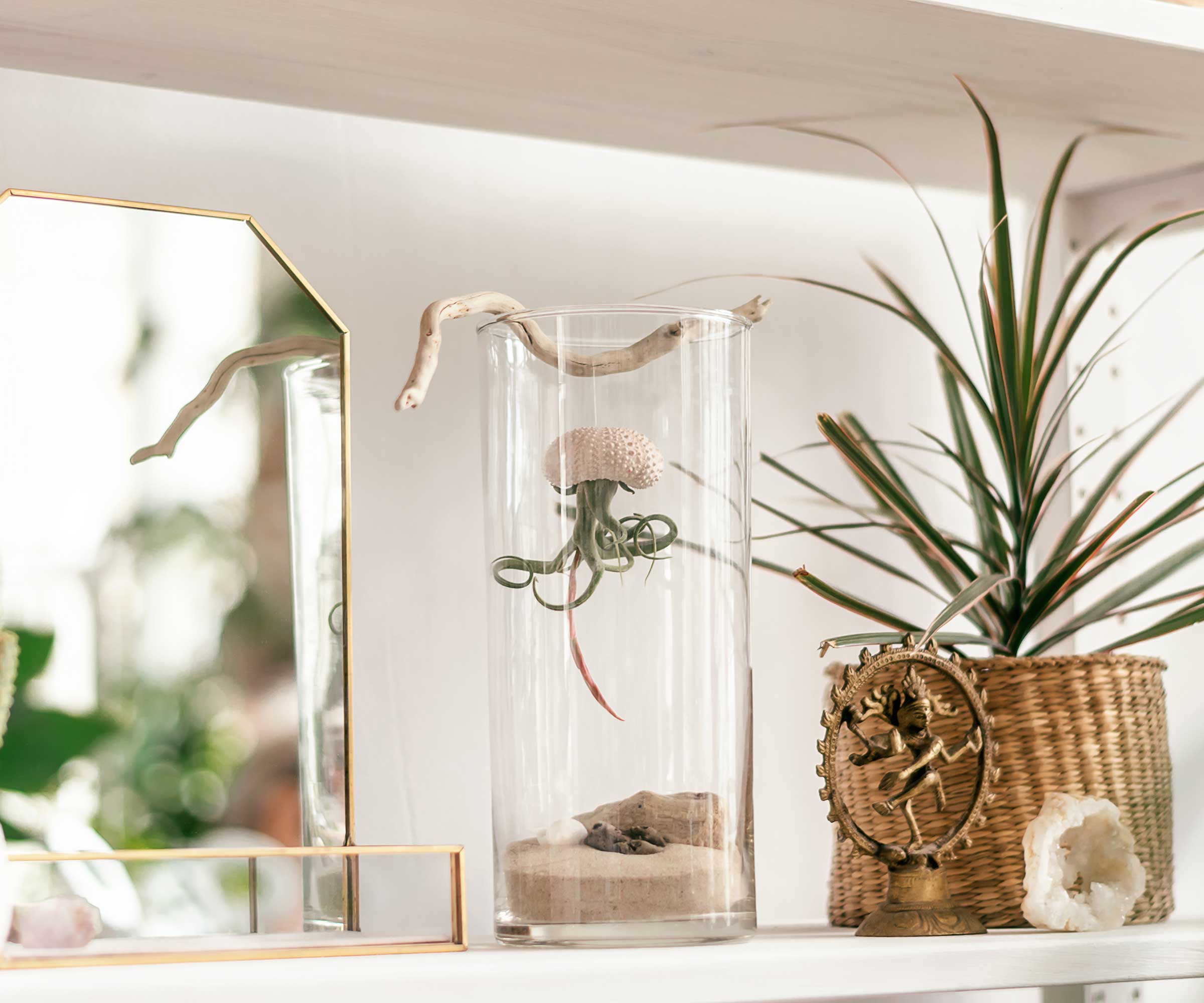
The unique characteristics of air plants bring a lot of benefits. Because they hang off rocks, you can incorporate them into your decor in a way that isn't possible with traditional terrariums. Air plants can fit inside tiny bauble terrariums which can be hung from a ceiling or trailed over a bookshelf, so they're much more versatile than traditional succulent terrariums.
This also means air plants usually have more visual interest than traditional terrariums. Most terrariums look fairly similar - a few plants in a glass case. However, because air plants can attach to almost anything, you can grow them on rock surfaces and driftwood and even hang them upside down. Jellyfish air plants - such as the air plant picture above - are quite common. You can even find larger air plants mounted on walls like trophy heads.
Unlike terrariums, where plants are usually confined to the case, air plants can stick out. For example, Tillandsia usenoides, (also known as Spanish Moss) is a fascinating trailing air plant that's great for creating vertical interest.
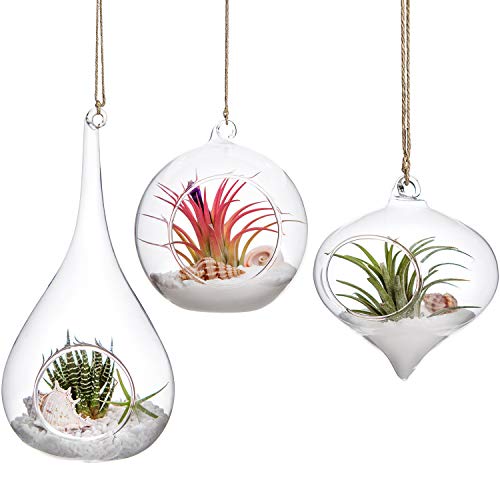
These inexpensive hanging planters are perfect for getting stated, with three glass baubles perfect for small air plants.
What are the drawbacks of an air plant terrarium?
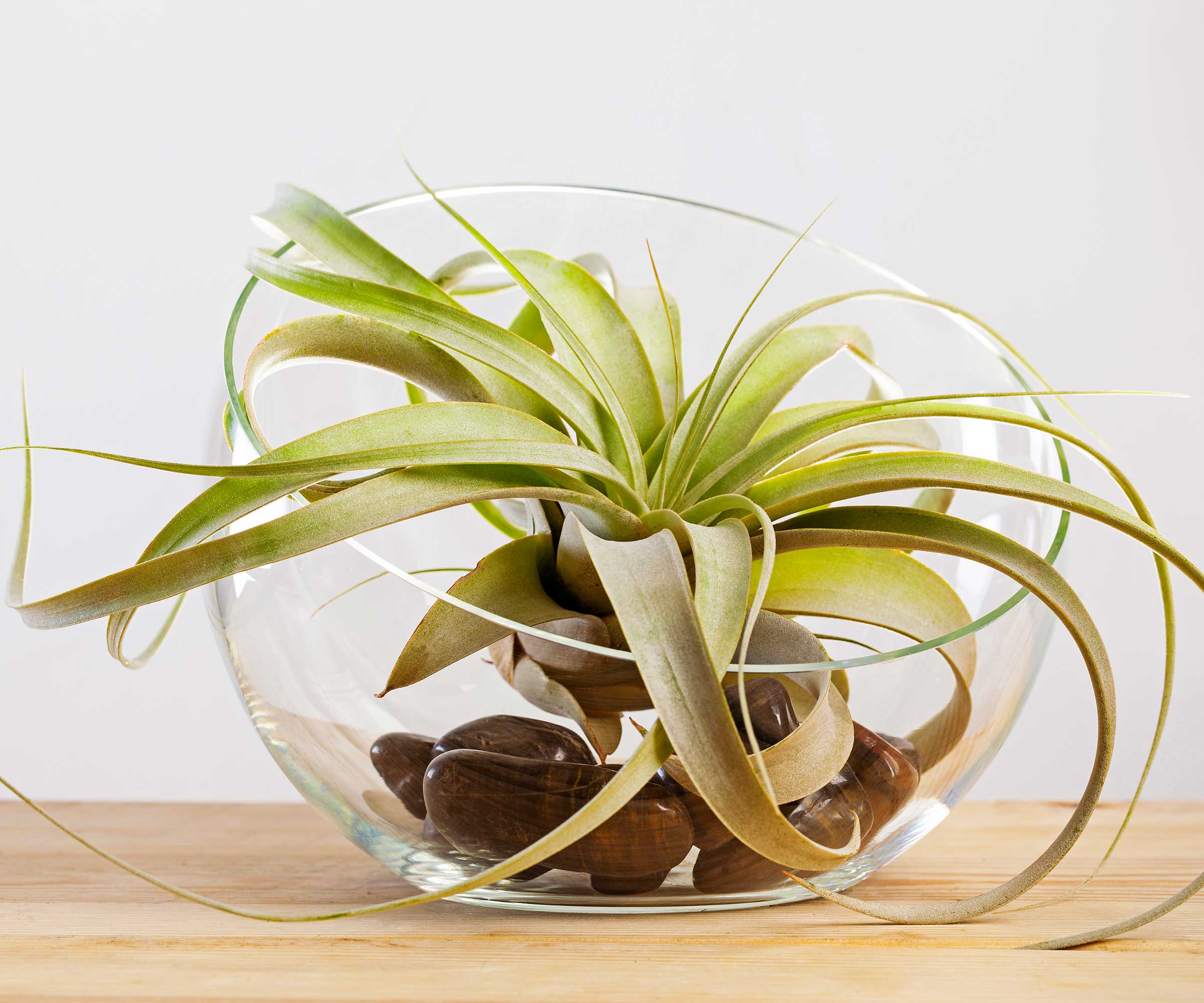
You're might be a little limited as to where you can place air plant terrariums. Air plants love humidity, so many people keep them in their bathrooms. However, true to their name, air plants need good airflow, and they also need light. Bathrooms - which usually don't have windows - are often the darkest and stuffiest rooms of the home when they aren't in use. This limits their use to kitchens, bedrooms, and living rooms, so they aren't as versatile as terrariums.
Air plants are pretty small, so it takes a lot of them to have any effect. A couple of air plants by themselves won't do much to introduce greenery or freshen a room.
What are the benefits of a succulent terrarium?
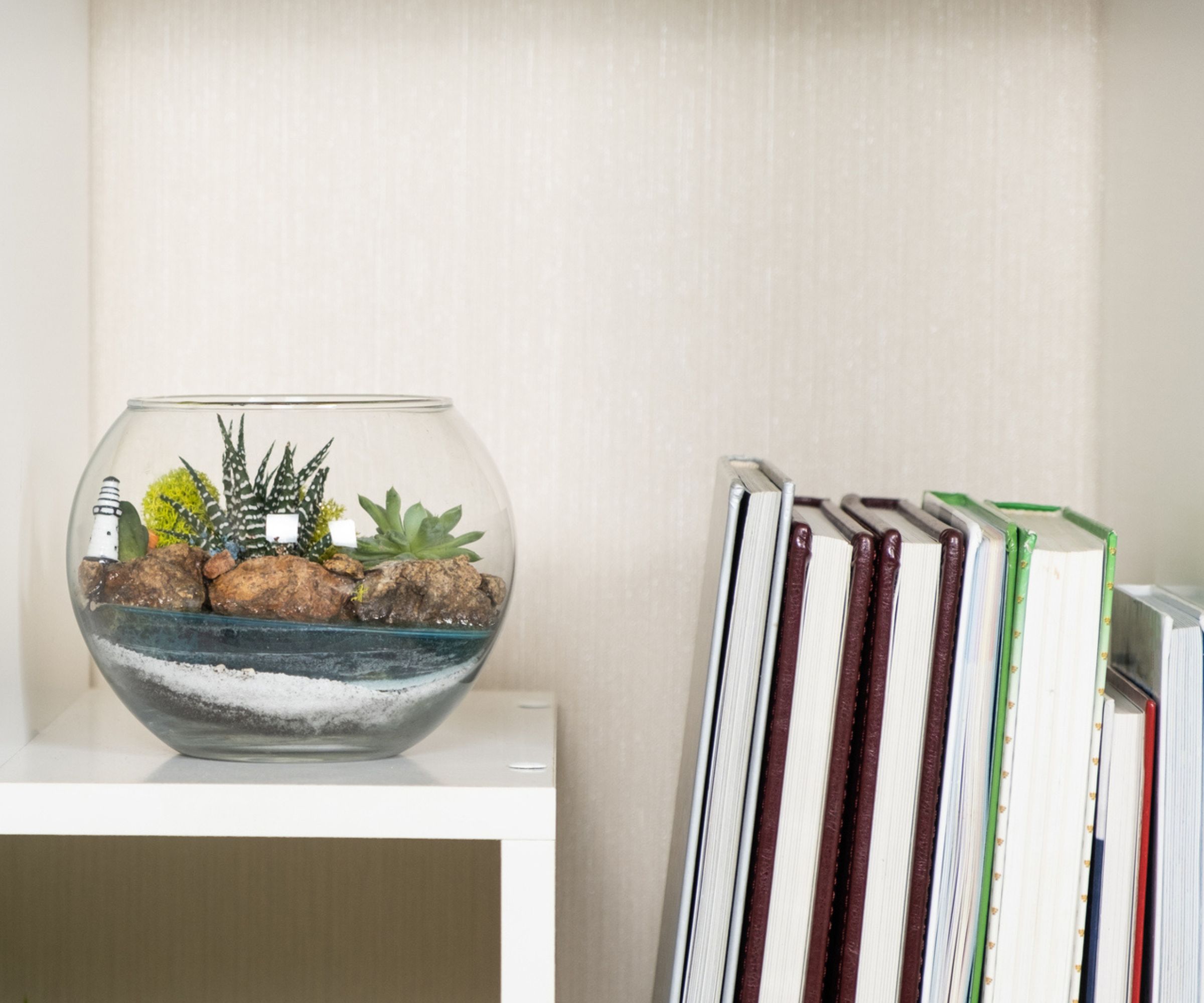
Succulent terrariums are much easier to maintain than air plants. Succulent terrariums only need to be watered every few weeks, unlike air plants which need misting every day. If you set up a closed terrarium, this will have its own water cycle, and you won't even need to water it all.
Because they're in sealed environments, succulent terrariums are often better at dealing with variable conditions than air plants, which need humidity, moisture, and good airflow.
This same sealed environment means terrariums are safe for holding toxic plants like snake plants or plants with strong smells.
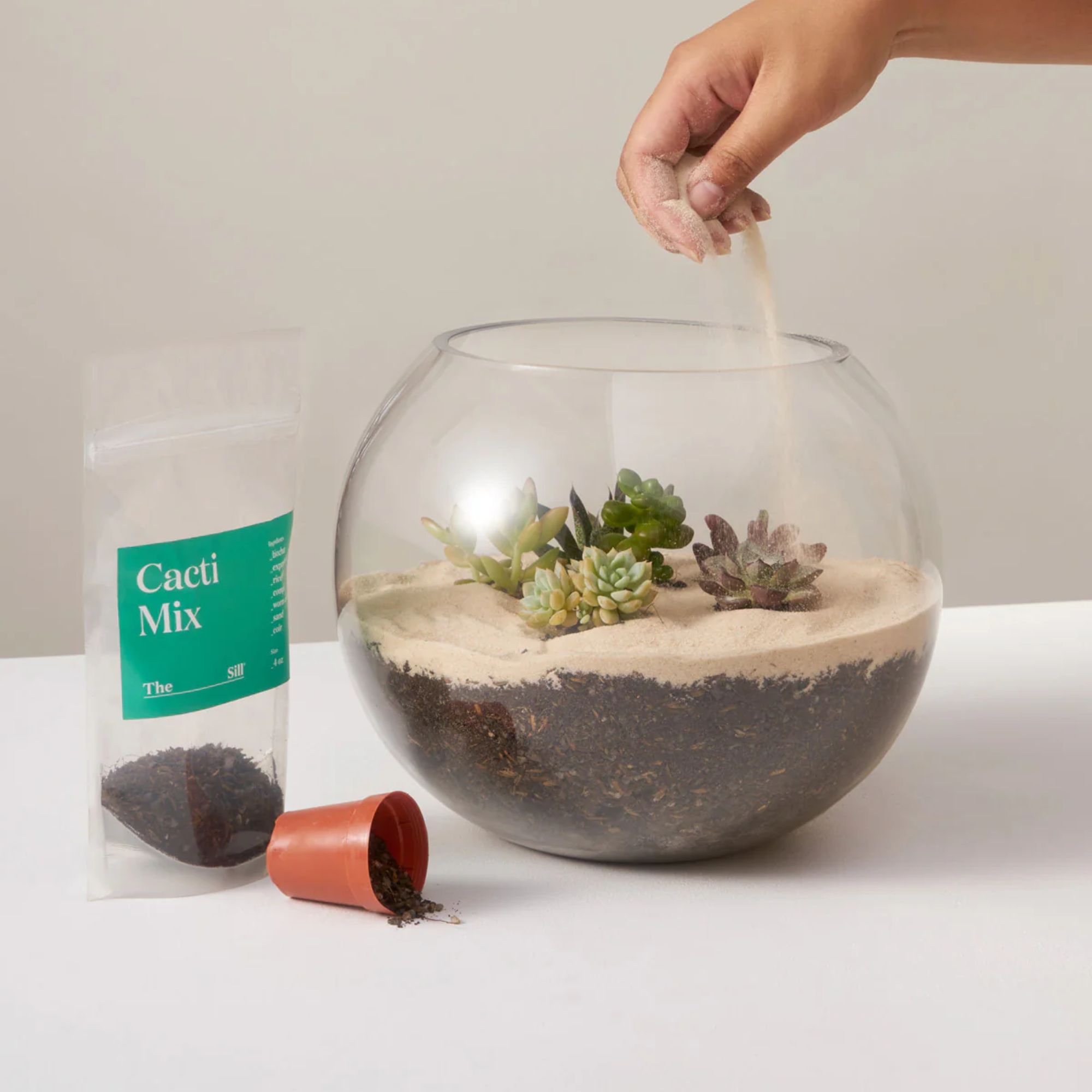
This DIY terrarium kit has a potting mix, sand, a glass bowl, and a choice of cacti and succulents; everything you need for start your own succulent terrarium.
What are the drawbacks to a succulent terrarium?
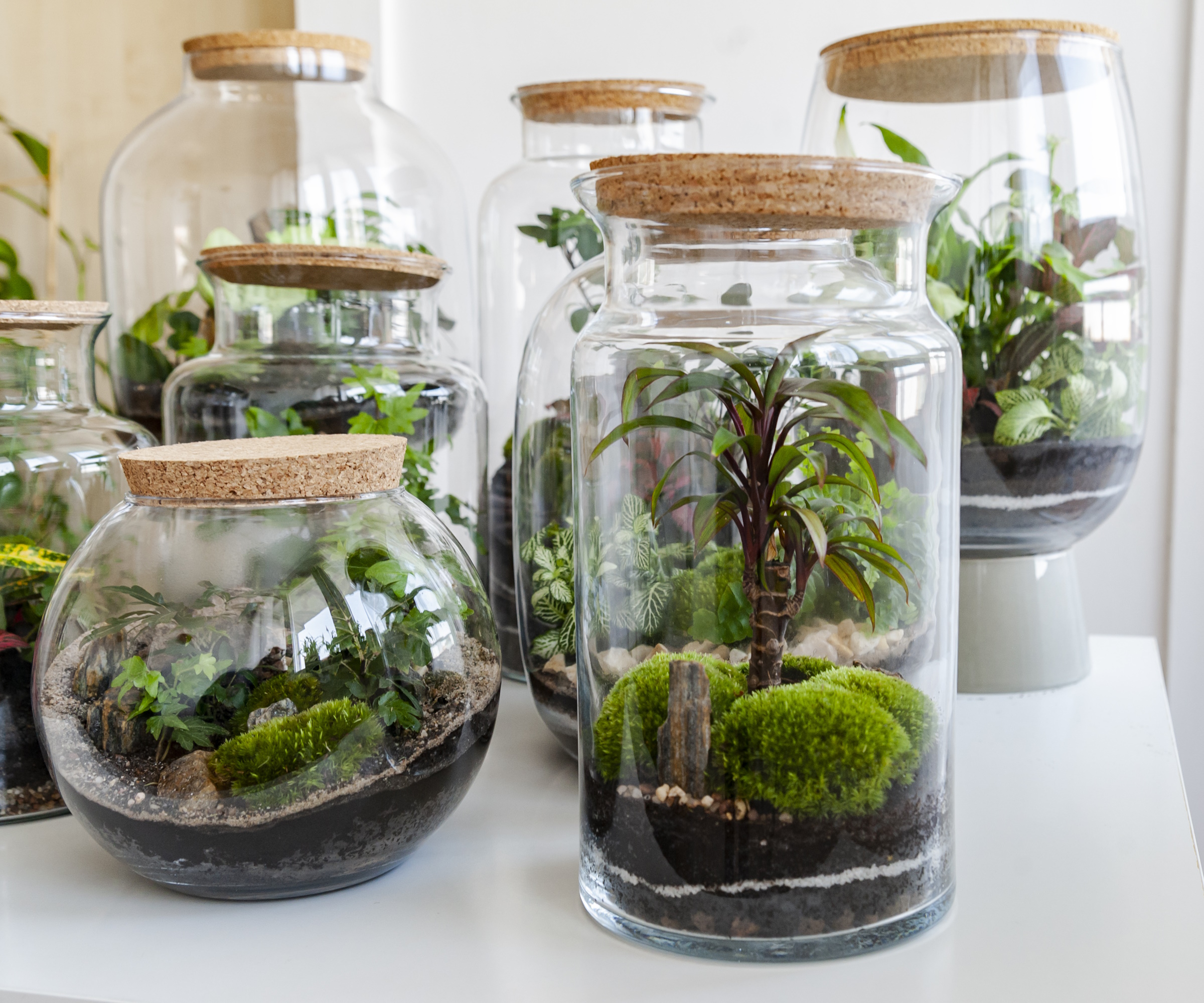
Traditional succulent terrariums, both open and closed, can be very heavy, so they won't be able to sit on every surface. They also take up a lot more counter or floor space than air plants, which don't even need to sit on a surface.
Air plants are easy to establish - you can fix them onto most surfaces with a little gardening twine. Terrariums, however, need careful layering of substates perfect for the plants, and if you opt for a closed terrarium, you need to carefully work out the initial moisture level in your tank.
Terrariums tend to be more expensive than air plants because they're larger and need more plants to start.
Unlike air plants, closed terrariums won't refresh or improve your air, and they can also look a little messy. Closed terrariums pick up a lot of condensation as part of their water cycle, and this fogginess can look a little untidy.
Terrariums of both kinds are just one way of introducing fresh air and greenery. It's important to weigh up the benefits of terrariums vs houseplants to work out which is best for your space.
There are plenty of houseplants that help to absorb moisture in the air and lots of tiny houseplants that fit in tight spots better than a neat terrarium.
Sign up to the Homes & Gardens newsletter
Design expertise in your inbox – from inspiring decorating ideas and beautiful celebrity homes to practical gardening advice and shopping round-ups.

As a gardens and lifestyle contributor, Alex makes sure readers find the right information to help them make the best purchase. Alex got his start in reviewing at the iconic Good Housekeeping Institute, testing a wide range of household products and appliances. He then moved to BBC Gardeners’ World Magazine, assessing gardening tools, machinery, and wildlife products.
-
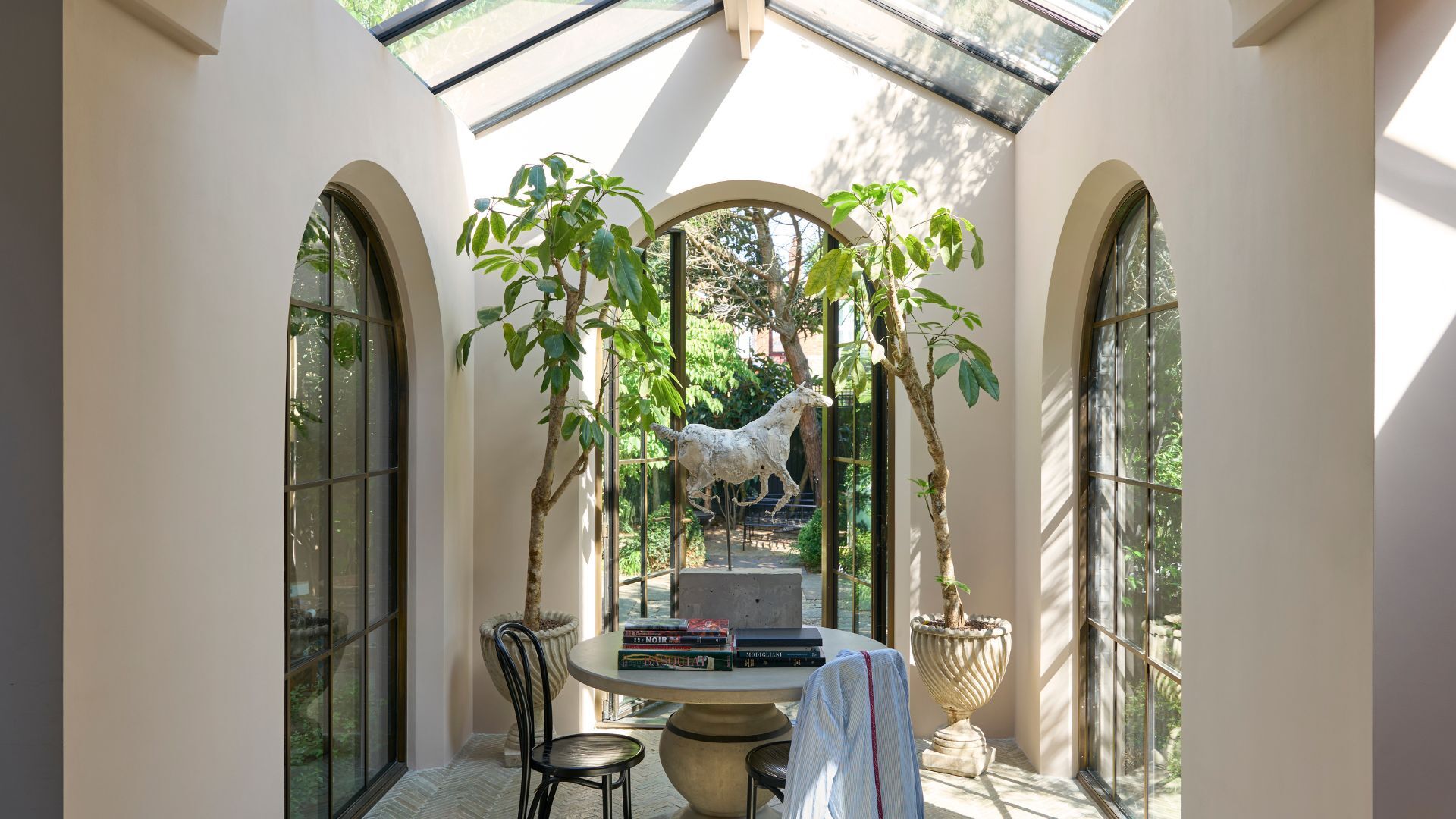 The 5 biggest design mistakes I have made in the last 20 years of decorating and renovating – and what I have learned from them
The 5 biggest design mistakes I have made in the last 20 years of decorating and renovating – and what I have learned from themLife is all just trial and error, or at least, the way I've been decorating has been
-
 Diane Keaton's former Lloyd Wright-designed home is a mid-century modern treasure trove – it's listed for $12.8 million
Diane Keaton's former Lloyd Wright-designed home is a mid-century modern treasure trove – it's listed for $12.8 millionThe actress purchased an iconic property in the Pacific Palisades, which she lovingly renovated – today, it's as timeless as ever (and in need of a new owner)
